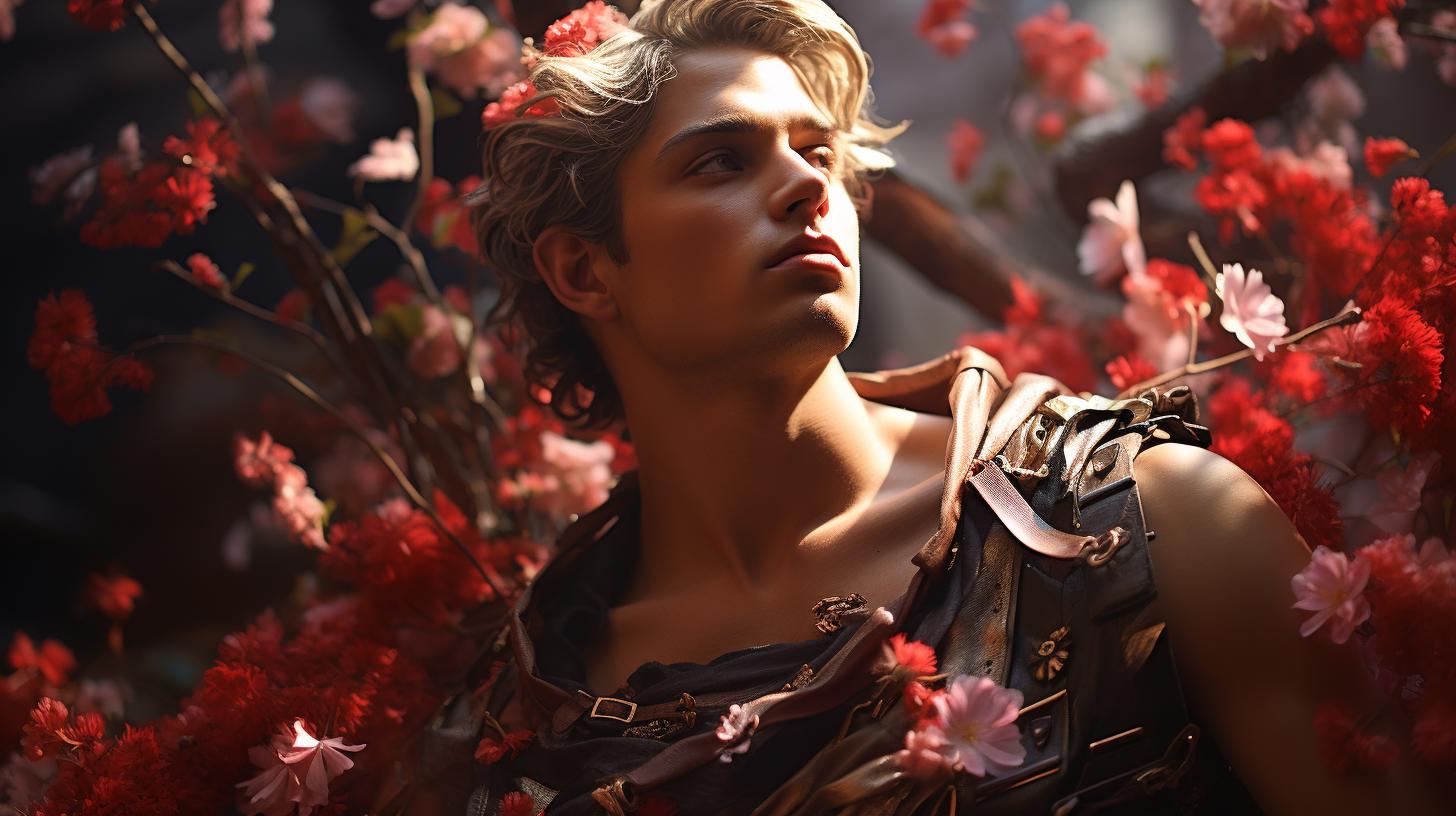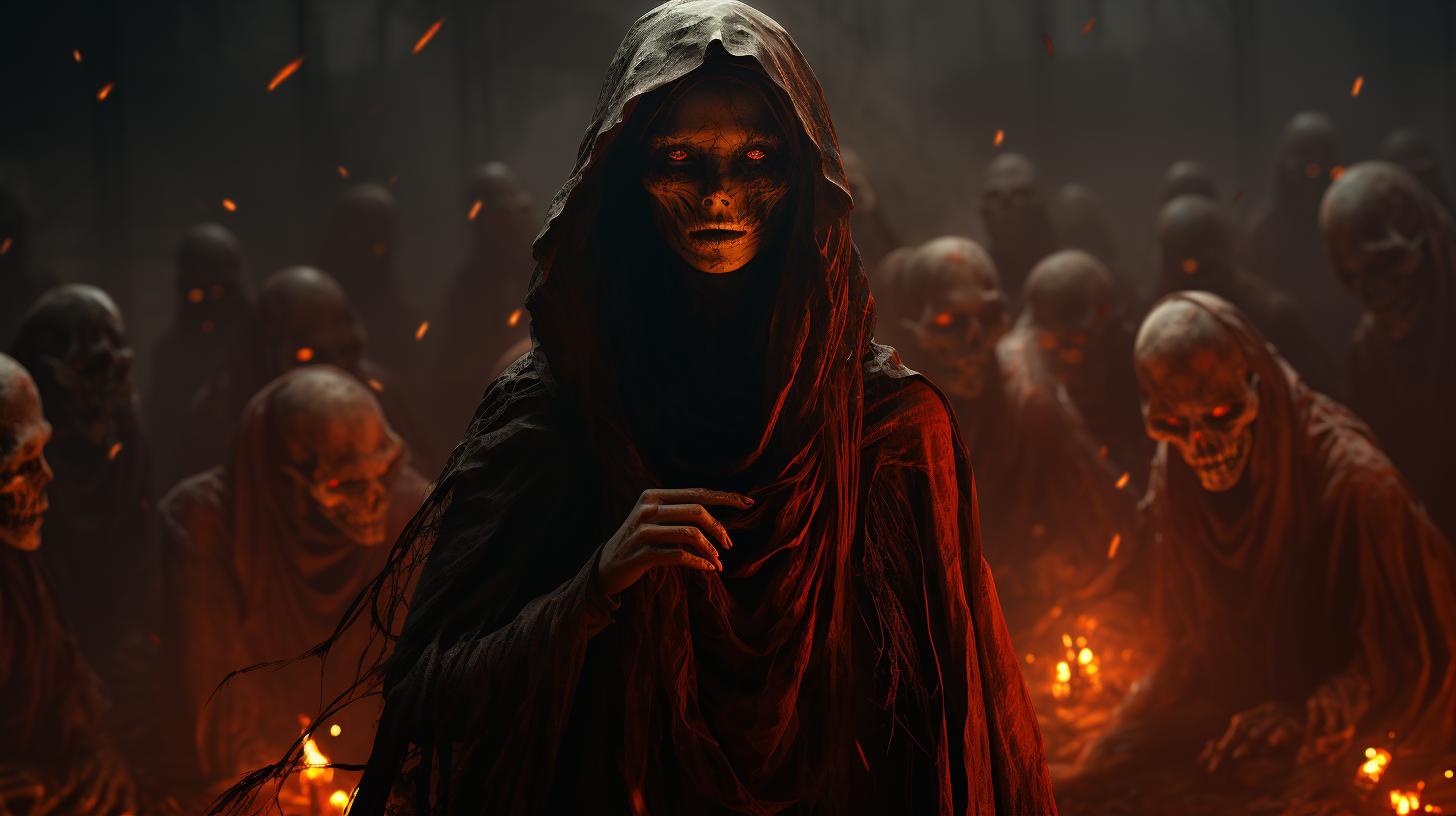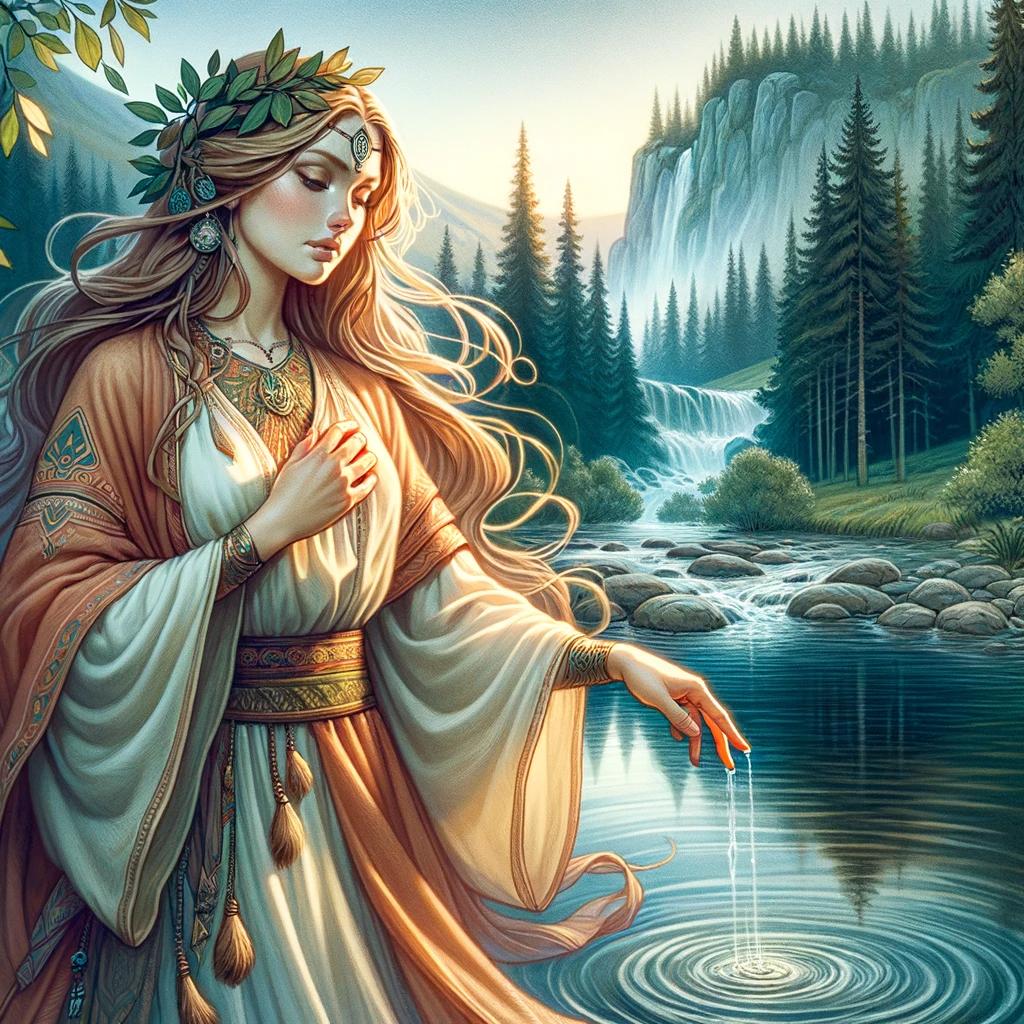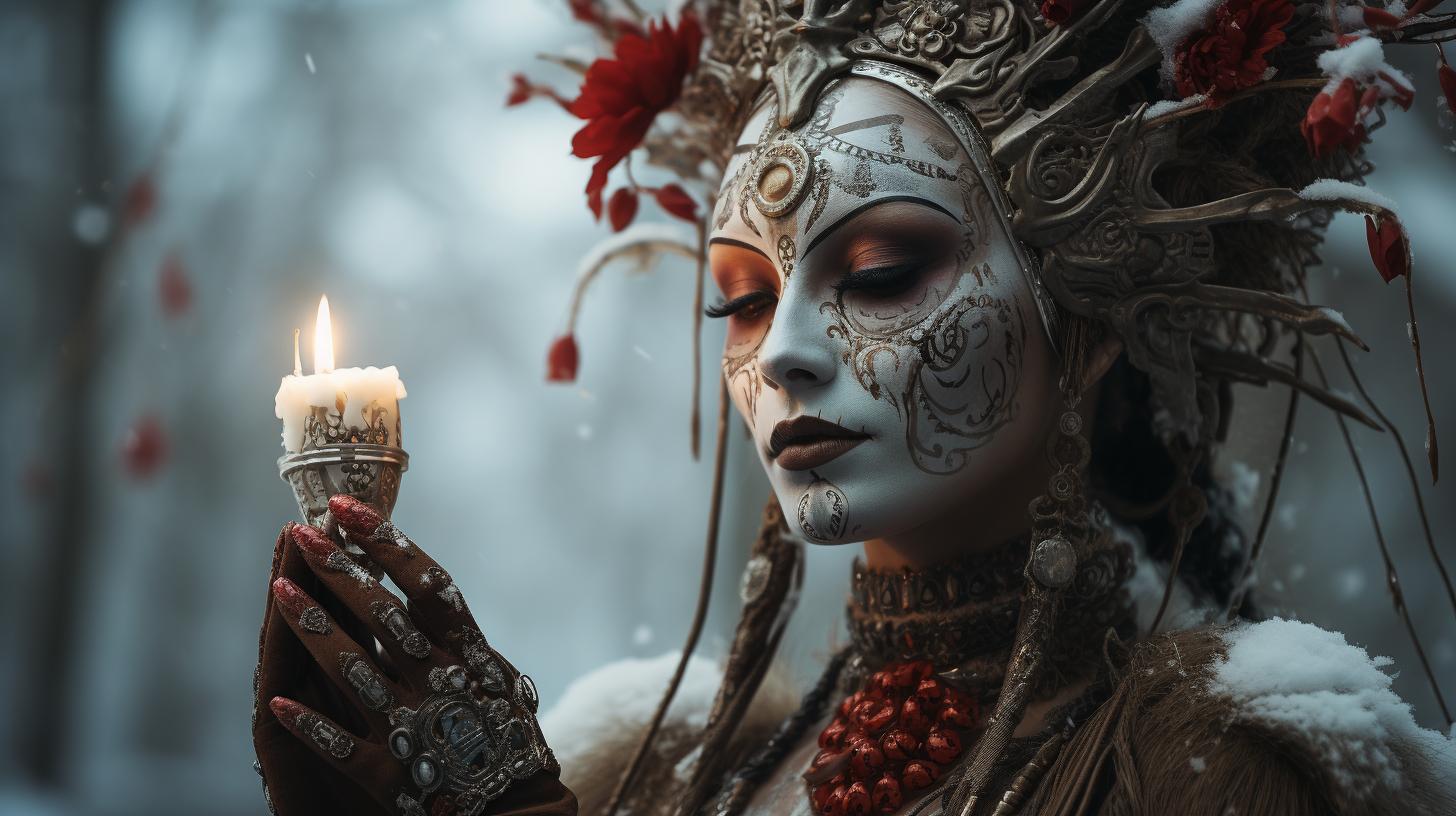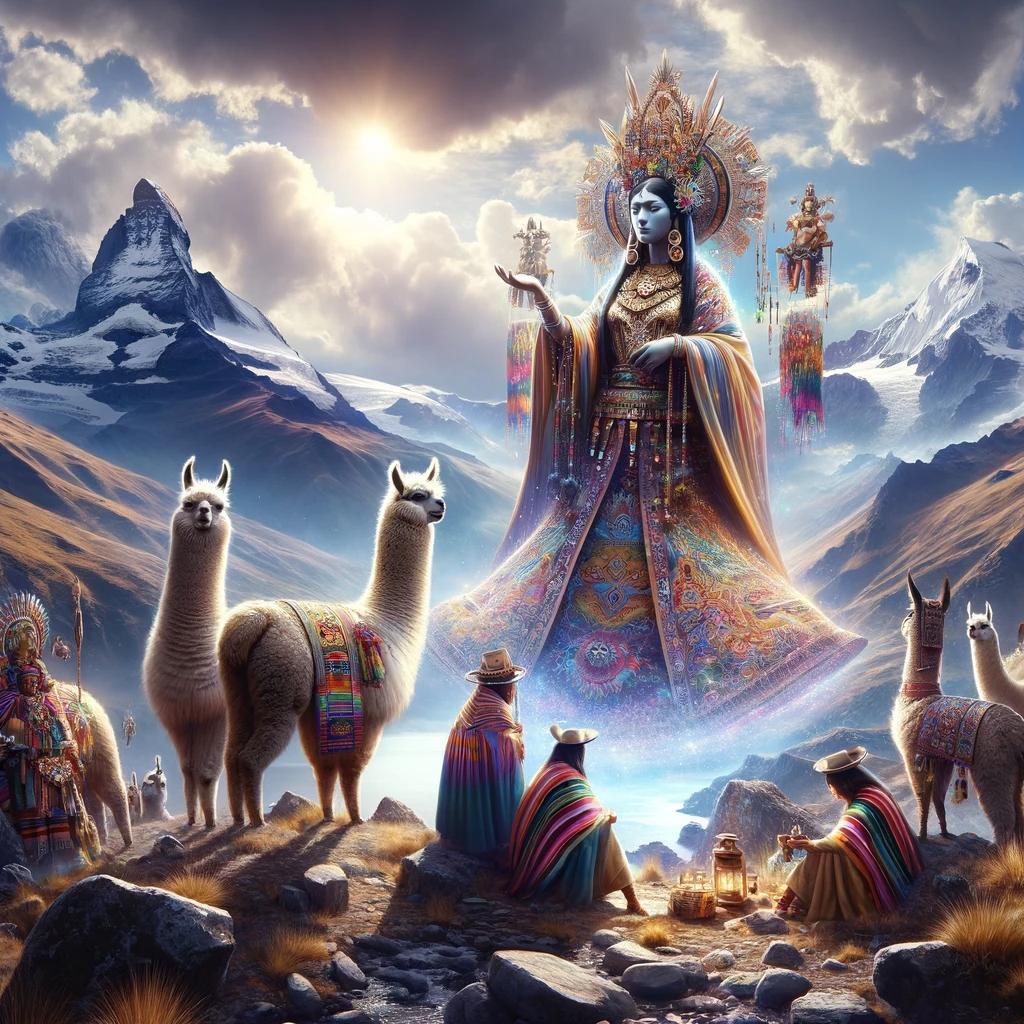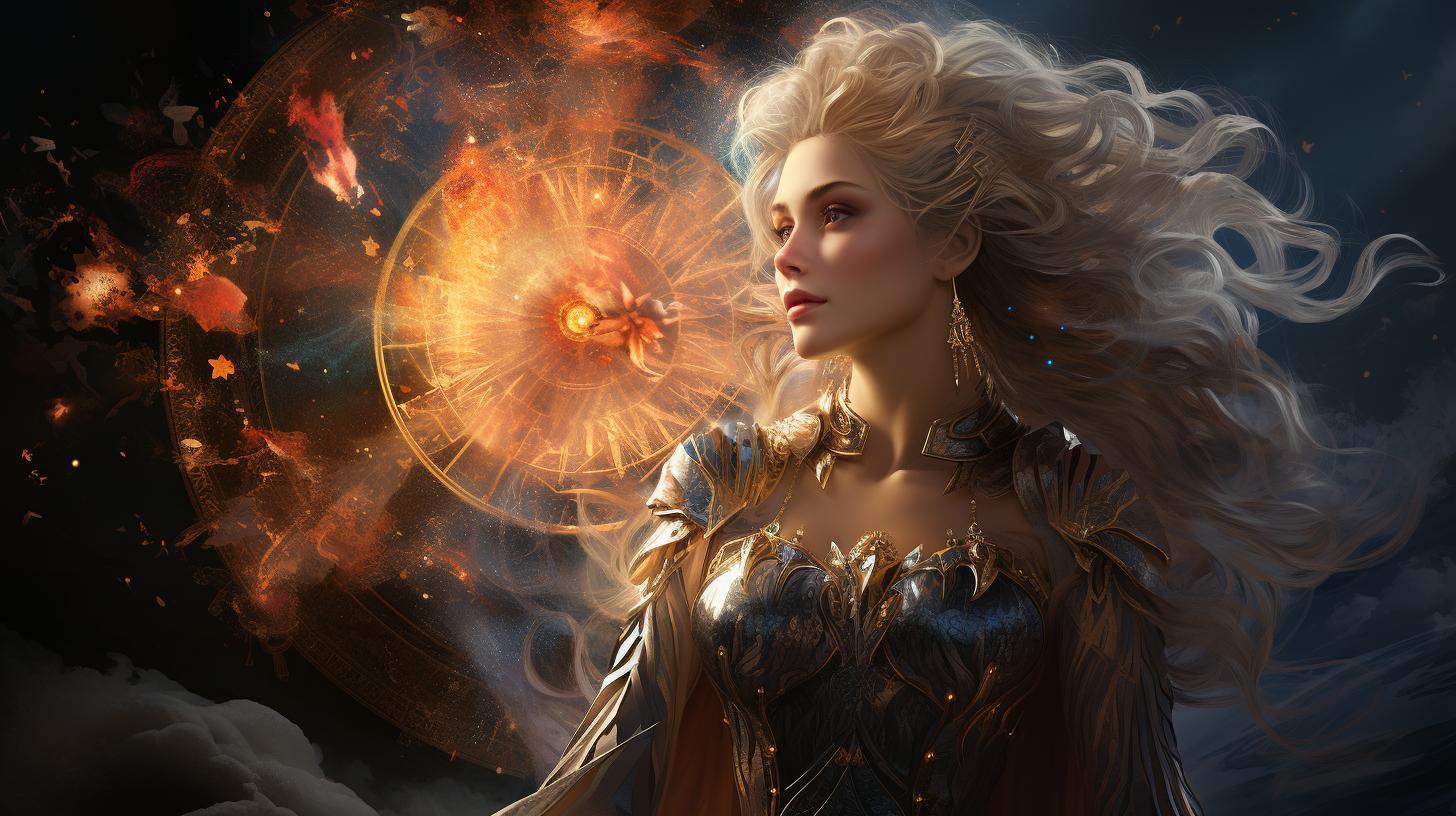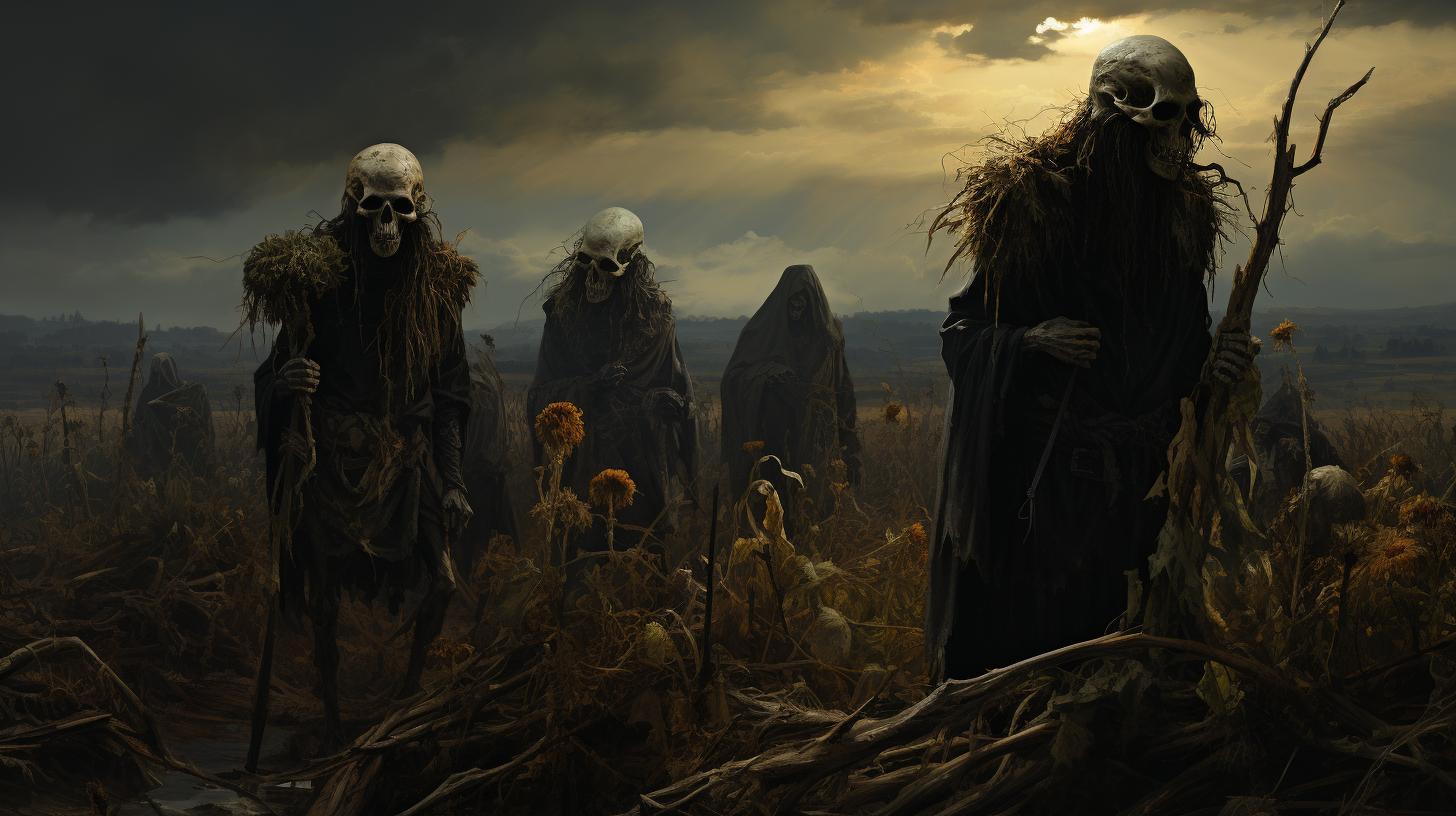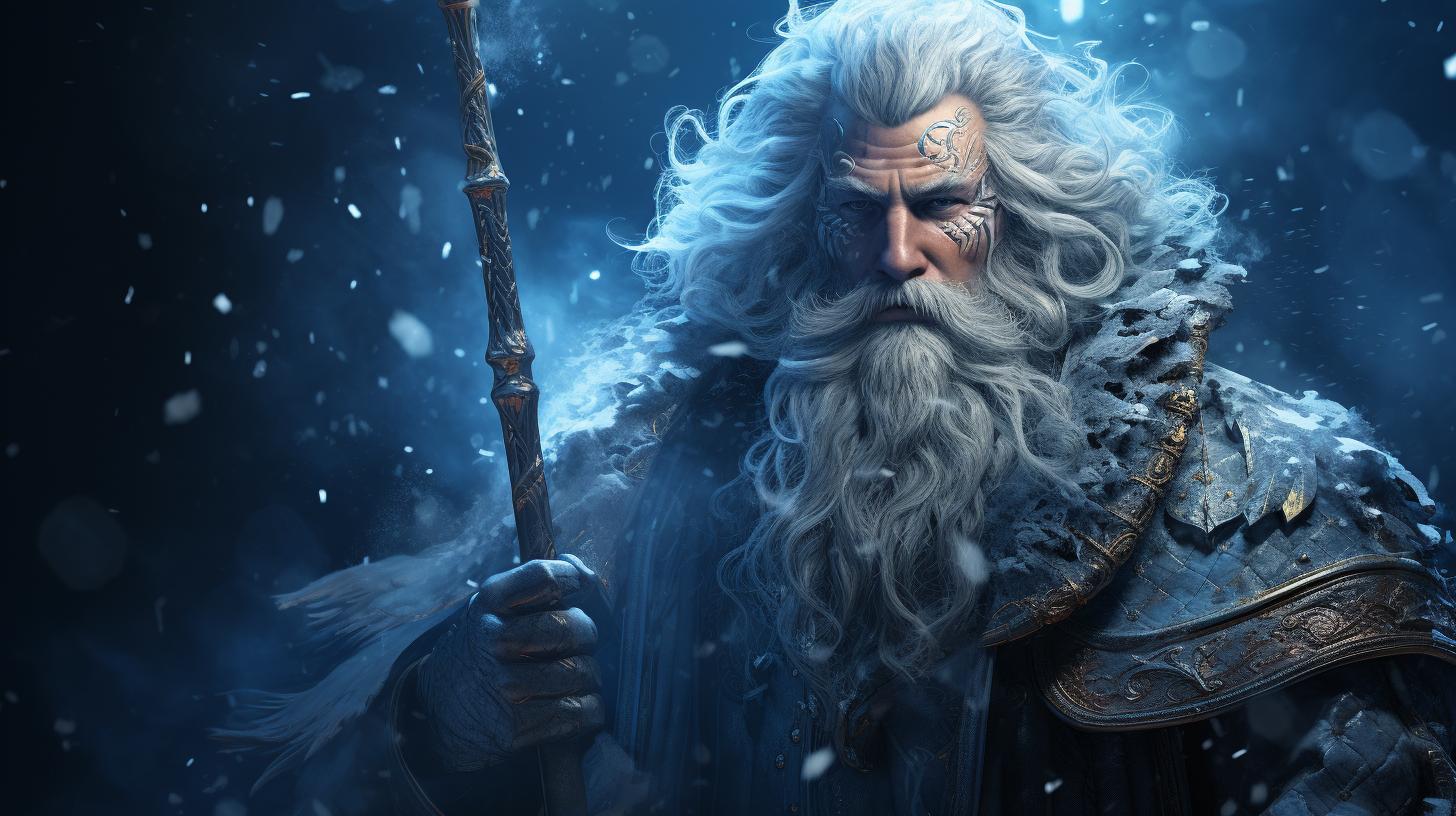Rod Slavic God Myth: Uncovering the Ancient Beliefs and Traditions of Slavic Religion
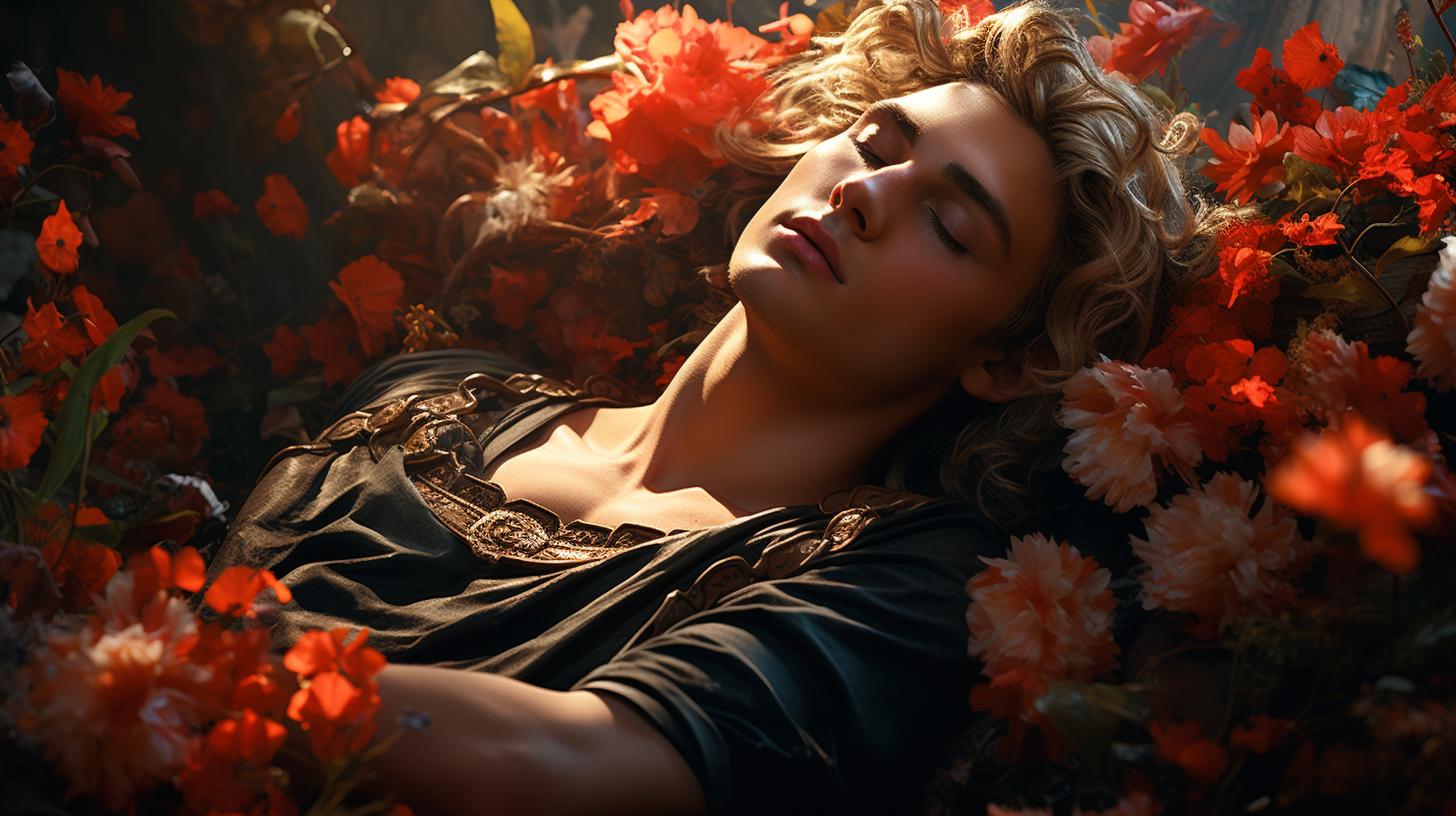
Rod Slavic god myth is a fascinating aspect of ancient Slavic religion. It encompasses beliefs surrounding the deity known as Rod, who is considered by some scholars to be the supreme god in Slavic mythology.
Rod is associated with protection, family, and the Rozhanitsy, goddesses of luck and childbirth. The worship of Rod involved ceremonies during childbirth and seasonal festivities. Over time, Rod’s cult weakened, giving way to other gods like Perun and Svarog. Despite this, Rod’s legacy persists in contemporary traditions and may have connections to modern holidays such as Christmas and Easter.
The Origins of Rod: Myth and Legend
The origins of Rod, the Slavic god, are rooted in a fascinating realm of myth and legend. This enigmatic deity holds significant importance in Slavic cosmology and is revered for various aspects of life and existence.
According to ancient texts and oral traditions, Rod is believed to be the supreme god in Slavic mythology, although interpretations of his role may vary.
Mythological tales describe Rod as the creator of all things, the bringer of life, and the primal force from which the universe emerged.
Legends speak of Rod’s association with the sun and his ability to grant fertility, prosperity, and protection to his worshippers. This divine figure carries immense significance in Slavic society and is often depicted as a symbol of ancestral lineage and the interconnectedness of families.
While precise details about Rod’s origins remain elusive, his existence is deeply entrenched in the belief systems and cultural practices of the Slavic people. He embodies the primordial forces of nature, the cycles of life and death, and the eternal spirit of the ancestors.
Worship of Rod is intricately intertwined with the rituals and ceremonies surrounding childbirth and the preservation of family traditions.
Rod’s Role in Slavic Cosmology
In Slavic cosmology, Rod holds a significant role as a foundational deity.
Rod is believed to be the creator of the universe and the supreme force that governs the natural world. As the embodiment of fertility and life, Rod represents the inherent power of creation and sustenance.
According to Slavic mythology, Rod is associated with the sun, symbolizing its importance in the cycle of life and the source of energy for all living beings. The sun’s celestial movement reflects Rod’s continuous influence on the world, providing light, warmth, and growth.
Furthermore, Rod is revered as the progenitor of all Slavic gods and goddesses. It is believed that from Rod sprang forth the entire pantheon, establishing his divine authority and establishing spiritual connections between the gods and mortals.
Within the cosmological framework, Rod acts as the cosmic pillar that upholds the order and balance of the universe. His presence permeates all aspects of existence, from the celestial realms to the earthly realms.
Rod’s vitality is intertwined with the prosperity and well-being of the natural world and its inhabitants.
As the guardian of fertility, Rod is closely associated with the growth of crops and the abundance of harvest.
The agricultural success of communities was believed to be directly influenced by Rod’s benevolence and favor. Rituals and offerings were often conducted to supplicate Rod for bountiful harvests and ensure the continuity of life.
- Understand Rod’s significance in Slavic cosmology and creation myths
- Appreciate Rod’s connection to the sun and its role in sustaining life
- Recognize Rod’s status as the progenitor of the Slavic pantheon
- Comprehend Rod’s role in maintaining cosmic order and balance
- Explore the agricultural associations and rituals dedicated to Rod’s fertility and abundance
The Relationship between Rod and the Rozhanitsy
The figure of Rod in Slavic mythology is closely intertwined with the Rozhanitsy, powerful goddesses associated with luck and childbirth.
These divine entities are believed to represent the spirits of ancient ancestors, serving as protectors of families and clans. The cult dedicated to the Rozhanitsy encompassed various ceremonies and festivities, celebrating the birth of a child and honoring the cycles of spring and autumn.
During these joyous occasions, elaborate banquets were held, and intricately decorated eggs symbolizing rebirth were placed on the graves of ancestors. The connection between Rod and the Rozhanitsy signifies a profound belief in their joint role in safeguarding the well-being and continuation of family lineage.
As Rod’s counterpart, the Rozhanitsy are often depicted as benevolent deities who bring good fortune, prosperity, and protection. Their divine presence is particularly revered during the vulnerable and miraculous moments associated with childbirth, highlighting their association with fertility and the perpetuation of life.
The relationship between Rod and the Rozhanitsy showcases the intricate ways in which Slavic mythology intertwines communal beliefs, the reverence of ancestral spirits, and the profound devotion to family and lineage.
It underscores the significance of these divine beings in the lives of the Slavic people, providing them with a sense of spiritual connection, protection, and continuity.
- The Rozhanitsy represent the spirits of ancient ancestors in Slavic mythology.
- They are associated with luck, childbirth, and the protection of families and clans.
- The cult dedicated to the Rozhanitsy included ceremonies and festivities during the birth of a child, as well as celebrations in spring and autumn.
- Eggs decorated during these festivities symbolize rebirth and are placed on the graves of ancestors.
- The Rozhanitsy play a crucial role in ensuring the well-being and continuation of family lineage.
- They are revered as benevolent deities who bring good fortune, prosperity, and protection.
- Their association with childbirth highlights their role in fertility and the perpetuation of life.
- The relationship between Rod and the Rozhanitsy underscores the interplay between communal beliefs, ancestral spirits, and devotion to family and lineage.
The Cult of Rod: Birth Ceremonies and Festivities
The cult of Rod, the Slavic god, encompassed various birth ceremonies and festivities that held significant cultural and spiritual importance in Slavic society.
These rituals were performed to honor Rod’s connection to creation, fertility, and the cycle of life.
One of the main birth ceremonies associated with the cult of Rod was conducted at the moment of a child’s birth.
It was believed that invoking Rod’s blessings and protection during this crucial event would ensure the child’s well-being and future prosperity. Family members and close friends gathered to participate in special rituals and offer prayers to Rod for a smooth and safe delivery.
In addition to birth ceremonies, the cult of Rod also celebrated seasonal festivities in spring and autumn as a way of acknowledging the renewal and cyclical nature of life. These festivals were marked by grand banquets, joyful gatherings, and vibrant decorations.
One notable tradition involved the decoration of eggs, which symbolized rebirth and were placed on ancestors’ graves as a representation of continuity and the eternal cycle of life and death.
During these festivities, the community would come together to express gratitude for the blessings bestowed by Rod, seeking his continued protection and guidance.
The rituals emphasized unity, shared heritage, and the role of Rod in sustaining familial and communal bonds.
Moreover, the cult of Rod’s birth ceremonies and festivities persisted even after the advent of Christianity in Slavic lands.
The introduction of Christianity led to the assimilation of certain aspects of Slavic mythology into Christian practices. Thus, some traditional customs and symbols associated with Rod found their way into modern-day holidays such as Christmas and Easter, providing a glimpse of Rod’s enduring influence in Slavic culture.
The cult of Rod, with its focus on birth ceremonies and festivities, encapsulated the reverence and respect for life’s beginnings and the cyclical nature of existence. It served as a reminder of the interconnectedness between the physical and spiritual realms and the essential role that Rod played in sustaining the Slavic community.
Interpretations and Beliefs about Rod
In Slavic mythology, the figure of Rod has sparked various interpretations and beliefs. Scholars have engaged in lively debates regarding Rod’s significance and role within the pantheon of Slavic gods.
While some view Rod as the supreme deity, others consider him as the guardian of the household and family.
One prevalent belief is that Rod represents the creative force behind the universe, emphasizing his association with creation and the sun.
This perspective views Rod as the divine source of life, fertility, and prosperity. It is in this context that the Rozhanitsy, the goddesses of luck and childbirth, are often seen as his manifestations or divine messengers.
Another interpretation focuses on Rod’s connection to ancestral spirits and the protection of families or clans. According to this belief, the cult of the Rozhanitsy served as a means of honoring and seeking the blessings of the ancient ancestors.
Rituals performed during childbirth and seasonal festivities were aimed at safeguarding the well-being of the family lineage.
Over time, as the influence of other gods like Perun and Svarog grew, the worship of Rod began to decline.
Nevertheless, remnants of Rod’s cult persisted through customs and traditions, even after the introduction of Christianity. The celebration of holidays like Christmas and Easter, which carry traces of ancient pagan practices, may have their roots in the veneration of Rod and the Rozhanitsy.
Comparisons between Rod and other Slavic deities further shed light on interpretations of his role.
Some scholars draw parallels between Rod and the Greek god Zeus, highlighting their shared attributes of supreme power and divine fatherhood. These connections not only provide insight into the complexity of Slavic mythology but also reflect the cultural exchange that took place between different ancient civilizations.
The linguistic connections to Rod and Slavic mythology have also been explored extensively. Etymological analysis indicates that Rod’s name derives from the Slavic word for “family,” reinforcing his association with kinship and the protection of ancestral heritage.
Such linguistic evidence further supports the belief in Rod’s role as a guardian and protector of the household.
The cultural significance of Rod cannot be underestimated. In Slavic society, Rod’s worship and beliefs surrounding him played a vital role in shaping communal bonds, familial ties, and the understanding of the cosmic order.
The study of Rod and his myths offers valuable insights into the religious, cultural, and social dynamics of ancient Slavic civilization.
Continued research and exploration into the realm of Rod will undoubtedly contribute to a deeper understanding of Slavic mythology and its enduring legacy in modern times.
The Decline of the Cult of Rod and the Rise of Other Deities
As time passed, the cult of Rod experienced a gradual decline within Slavic society. This decline was accompanied by the emergence and growing prominence of other deities, such as Perun and Svarog. While Rod was once considered the supreme god in Slavic mythology, his influence waned as new gods took center stage.
The reasons behind this decline are multifaceted. One factor could be the changing social and cultural landscape, which may have led to a shift in religious beliefs and practices. Additionally, external influences, such as the spread of Christianity, played a significant role in reshaping Slavic religious traditions.
With the rise of Christianity, many aspects of the traditional Slavic religious practices, including the worship of Rod, were gradually replaced or assimilated into the new Christian framework. As a result, the cult of Rod lost its prominence and was overshadowed by the beliefs and rituals associated with the Christian faith.
Despite the decline of Rod’s cult, certain remnants of his worship persisted. In some regions, especially in rural communities, older traditions and customs associated with Rod continued to be practiced alongside Christian religious observances.
This syncretism allowed for the preservation of elements from the ancient Slavic mythology, even in the face of external religious influences.
Furthermore, the legacy of Rod can still be detected in modern-day Slavic societies, albeit in altered forms.
Some festivals and celebrations, such as the spring and autumn harvest festivities, bear traces of Rod’s mythos, with rituals and customs that symbolize rebirth and renewal. These practices serve as a testament to the enduring influence of Rod and the ancient Slavic belief system.
In conclusion, the decline of the cult of Rod corresponded with the rise of other deities in Slavic mythology, influenced by social, cultural, and religious changes over time. Although the worship of Rod diminished, remnants of his cult survived in syncretic practices and cultural traditions.
The legacy of Rod continues to shape the cultural landscape of modern Slavic communities, offering insights into the rich and complex history of Slavic mythology.
Rod’s Legacy in Modern Traditions and Festivals
The ancient deity Rod continues to leave a lasting legacy on Slavic culture, particularly in the realm of traditions and festivals.
Despite the waning popularity of his cult, remnants of Rod’s worship persist in various customs and celebrations that are observed even in contemporary times.
One notable event that showcases Rod’s influence is the celebration of seasonal festivals, which hold great importance in Slavic communities.
These festivals, often centered around the equinoxes and solstices, provide an opportunity for people to honor nature and its cycles. Elements of Rod’s rituals can be identified in these festivities, such as communal gatherings, feasting, and the decoration of symbolic items.
Furthermore, certain modern traditions bear striking resemblance to ancient practices associated with Rod and the Rozhanitsy. Take, for instance, the tradition of decorating eggs during springtime. This ancient practice, believed to symbolize rebirth and fertility, mirrors the egg decoration rituals performed in honor of Rod’s cult and the Rozhanitsy. These beautifully adorned eggs serve as a testament to the enduring legacy of Rod and his associated deities.
Additionally, aspects of contemporary holidays, such as Christmas and Easter, may trace their origins back to Rod and Slavic paganism. The timing of these holidays aligns with ancient seasonal celebrations that were intrinsic to Rod’s worship.
It is plausible that certain customs and symbols found in these modern festivities have roots in the traditions associated with Rod, serving as a prime example of how his legacy lives on in today’s society.
- Seasonal festivals continue to echo Rod’s influence
- Ancient practices like egg decoration persist in modern traditions
- Modern holidays like Christmas and Easter may have Slavic pagan origins
Rod’s Association with Creation and the Sun
One of the fascinating aspects of Rod’s mythology is his association with creation and the sun.
In Slavic cosmology, Rod is often depicted as the divine force responsible for the birth and development of the universe. He is believed to have played a vital role in shaping the world, bringing life and light into existence.
In Slavic mythology, the sun is considered a powerful symbol of life, warmth, and energy. It is believed that Rod’s association with the sun signifies his role as the source of life and the sustainer of all living beings.
The sun’s daily rise and fall reflect the continuous cycle of creation and regeneration linked to Rod’s divine influence.
A variety of ancient Slavic rituals were dedicated to honoring Rod’s connection to creation and the sun.
During these rituals, worshippers would gather to offer prayers, songs, and symbolic offerings in gratitude for the life-sustaining energy that Rod brought to the world through the sun’s rays.
The symbolism of the sun in relation to Rod also extends to the concept of enlightenment and spiritual illumination.
Just as the sun illuminates the world, Rod is seen as the enlightener of human consciousness, guiding individuals towards wisdom, knowledge, and self-realization.
- Rod’s association with creation emphasizes his divine role in the origins of the universe.
- The sun symbolizes life, warmth, and energy, reflecting Rod’s life-giving power.
- Ancient rituals were performed to honor Rod’s connection to the sun and its life-sustaining energy.
- Rod’s association with the sun extends to the concept of enlightenment and spiritual illumination.
Understanding Rod’s association with creation and the sun gives us valuable insights into the ancient Slavic worldview and their beliefs about the origins of life and the significance of celestial bodies.
It showcases Rod’s central role as a divine force shaping the world and imparting wisdom to humanity through the illuminating power of the sun.
The Influence of Greek Mythology on Rod’s Narrative
The mythological narratives surrounding Rod, the Slavic god, are not isolated from outside influences.
Greek mythology, with its rich pantheon of gods and captivating tales, undoubtedly played a role in shaping Rod’s narrative. While the Slavic and Greek mythologies are distinct, there are intriguing parallels and possible connections that shed light on the interplay between these two ancient belief systems.
Greek mythology, characterized by its epic stories and powerful deities, had a profound impact on the cultural and intellectual development of many civilizations. Upheavals and migrations triggered intercultural exchanges, leading to the dissemination of Greek myths across various regions.
Slavic territories, situated geographically close to areas influenced by Greek civilization, likely encountered and absorbed elements of Greek mythology, including themes and motifs that later found their way into the Rod narrative.
One notable aspect of Greek mythology that may have influenced Rod’s portrayal is the concept of divine lineage and parentage. In Greek mythology, the genealogy of gods and goddesses plays a significant role in defining their attributes and role in the pantheon.
Similarly, Rod’s divine lineage and kinship connections may have drawn inspiration from this Greek tradition, emphasizing his importance as a prominent deity within Slavic cosmology.
Additionally, the Greek mythological themes of creation, cosmology, and the struggles between gods and mortals could have resonated with Slavic societies.
These shared themes might have provided a framework for conceptualizing Rod’s role and his interactions with other deities within Slavic mythology.
While it is challenging to establish direct influences, certain similarities between Greek and Slavic mythologies are worth highlighting.
For instance, the prominence of divine entities associated with natural phenomena, such as the sun, resonates in both cultures. This parallel could indicate the presence of shared cultural ideas or indirect influences from Greek mythology on Rod’s characterization.
However, it is vital to approach these possible connections with caution and recognize that every culture has unique mythological narratives shaped by its specific historical and cultural context. Further scholarly research and analysis are necessary to deepen our understanding of the intricate interplay between Greek mythology and the development of the Rod myth.
Comparison between Rod and Other Slavic Deities
When considering the pantheon of Slavic deities, it is essential to analyze the unique aspects and comparisons between Rod and other worshipped gods. Although Rod is often depicted as the supreme deity in Slavic mythology, there are distinct characteristics and roles that differentiate him from other gods, such as Perun, Svarog, and Veles.
Rod versus Perun
One of the most notable comparisons is between Rod and Perun, the god of thunder and storms.
While Rod embodies the concept of creation and fertility, Perun represents power, protection, and the forces of nature. While both gods hold important positions in the Slavic pantheon, their domains and responsibilities diverge significantly.
Rod versus Svarog
Svarog, the god of celestial fire and divine smithery, stands as another deity with notable differences compared to Rod. While Rod represents the home, family, and the preservation of lineages, Svarog embodies the element of fire and its transformative powers.
Svarog’s focus on craftsmanship, forging, and the divine flame sets him apart from Rod’s association with fertility and ancestral protection.
Rod versus Veles
Veles, the god of the underworld and earthly realms, offers yet another fascinating contrast to Rod. While Rod is often associated with creation and the sun, Veles symbolizes the chthonic forces, representing the depths of the earth and the spirits of the deceased.
The dichotomy between Rod’s celestial ties and Veles’ connection with the underworld showcases the diverse nature of Slavic mythology.
Common Themes and Shared Attributes
Despite these differences, it is important to note that all Slavic deities, including Rod, Perun, Svarog, and Veles, share certain common themes and attributes. Many of them hold positions of power and influence, possess supernatural abilities, and embody important aspects of human existence.
Their individual roles within the pantheon weave a complex tapestry of myth and belief that shapes the Slavic religious tradition.
In conclusion, comparing Rod with other Slavic deities reveals the distinctive qualities and roles each god occupies within Slavic mythology.
While Rod emphasizes creation, family, and protection, other gods like Perun, Svarog, and Veles bring forth their unique domains of power and significance. Together, these interconnected divine figures form a rich tapestry of belief and illustrate the multifaceted nature of Slavic religious practices.
The Linguistic Connections to Rod and Slavic Mythology
Exploring the linguistic connections to Rod and Slavic mythology provides valuable insights into the origins and evolution of this ancient belief system. Linguistic analysis allows us to trace the etymology and meaning of various terms associated with Rod and Slavic mythology, shedding light on their cultural significance.
One linguistic link to Rod lies in the Slavic word “rodit,” which means “to give birth.” This connection reinforces Rod’s association with fertility, childbirth, and the cycle of life. Additionally, the term “rozhanitsy” derives from the same word root, emphasizing the close relationship between Rod and the Rozhanitsy.
Furthermore, the word “Rod” itself holds linguistic significance.
In Slavic languages, it translates to “kin,” “family,” or “ancestry.” This linguistic tie aligns with the belief that Rod represents the ancestral spirits and serves as the protector of families and clans.
As researchers delve deeper into linguistic connections, they also examine the links between Slavic and Indo-European languages. Comparative analysis shows similarities between Rod and other deities in different Indo-European mythologies, such as the Vedic god “Rudra” and the Norse god “Odin.” These linguistic parallels suggest a shared ancient heritage and highlight the wide-reaching influences on Slavic mythological beliefs.
Additionally, linguistic studies shed light on the evolution of Slavic mythology over time. As Slavic populations interacted with neighboring cultures and experienced various historical events, linguistic changes influenced mythological narratives.
For instance, the adoption of Christianity brought new terminology and concepts, reshaping the perception of Rod and his place in Slavic society.
In conclusion, exploring the linguistic connections to Rod and Slavic mythology provides valuable insights into the cultural significance and evolution of this ancient belief system.
By analyzing word roots, etymology, and comparative linguistics, researchers unravel the deep-seated connections between Rod, the Rozhanitsy, and other Indo-European mythologies. These linguistic investigations shed light on the rich tapestry of Slavic mythology and its intricate ties to ancestral heritage, family, and the cycle of life.
Rod’s Cultural Significance in Slavic Society
The cultural significance of Rod in Slavic society cannot be overstated. As the supreme god in Slavic mythology, Rod held a central role in shaping the religious and spiritual beliefs of the ancient Slavic people.
Rod represented the ancestral spirits and was revered as the protector of families and clans. His worship was deeply intertwined with the social fabric of Slavic communities, as evident by the various rituals and festivities dedicated to him.
Rod’s cultural significance extended beyond religious practices and permeated into the daily lives of Slavic individuals. He was seen as the divine patron of the home and guardian of domestic harmony.
Many Slavic families sought his blessings for fertility, protection, and prosperity. Rod’s presence was felt in the household through the customs of offering prayers and making offerings to ensure his favor and blessings upon their homes.
Furthermore, Rod’s association with creation and the sun underscored his importance in the Slavic worldview. He was closely linked to the natural cycles of birth, growth, and renewal. His presence was particularly emphasized during the spring and autumn festivities, which celebrated the cycles of life and death.
These rituals included lavish banquets and the decoration of eggs, symbolizing rebirth and continuity.
The cultural significance of Rod also influenced the development of Slavic languages and the preservation of cultural heritage.
Many Slavic words and phrases have traces of Rod’s mythology and beliefs, highlighting the enduring impact of his cult on the linguistic landscape of the region.
- The reverence for Rod in Slavic society was a testament to the deep-rooted connection between the spiritual and the temporal aspects of life.
His worship served as a source of unity, reinforcing the bonds between families and clans, and instilling a sense of shared identity.
- Rod’s cultural significance remained resilient even in the face of external influences, such as the advent of Christianity.
Elements of Rod’s worship persisted, blending with Christian traditions and influencing contemporary festivals like Christmas and Easter.
- Modern Slavic societies continue to explore and revive the cultural significance of Rod, seeking to reconnect with their ancient roots and reclaim their unique heritage.
Revival movements have emerged, aiming to preserve and revitalize the rituals and practices associated with Rod’s worship.
In conclusion, Rod’s cultural significance in Slavic society is a testament to the profound impact he had on the religious, social, and linguistic aspects of Slavic culture.
His role as the supreme god, protector of families, and symbol of creation has left an indelible mark on the cultural identity of the Slavic people.
Rod and the Evolution of Slavic Mythology in History
The evolution of Slavic mythology throughout history offers a fascinating insight into the transformation of beliefs surrounding Rod, the Slavic god.
Over time, Rod’s role and significance have undergone shifts influenced by various factors.
A notable aspect of Rod’s evolution is the impact of other cultures, particularly Greek mythology. Greek influences introduced new narratives and symbolism into Slavic mythology, shaping Rod’s portrayal as a deity associated with creation and the sun.
This cross-cultural exchange enriched Slavic mythology by intertwining it with Greek mythology.
Additionally, the comparison between Rod and other Slavic deities highlights the complex web of relationships within the pantheon.
Although some scholars consider Rod the supreme god, interpretations differ, suggesting alternative roles such as protection of the home and family. These variations demonstrate the fluidity and adaptability of Rod’s mythology within Slavic society.
Linguistic connections provide further insights into Rod and Slavic mythology. Linguistic analysis reveals shared roots between Slavic languages and their mythological concepts. Studying these connections helps unravel the intricacies of Rod’s character and his place within the broader Slavic belief system.
Rod’s cultural significance within Slavic society cannot be understated. The cult of Rod incorporated birth ceremonies and festivities, emphasizing the importance of family and ancestry. These rituals, including the decoration of eggs and feasts, preserved traditions that endured even after the arrival of Christianity.
However, with the rise of Christianity, the cult of Rod gradually declined. As Slavic societies embraced new religious systems, Rod’s veneration gave way to the growing prominence of other deities like Perun and Svarog. The shift in worship practices reflected the evolving spiritual landscape of Slavic communities.
Despite the fading of the cult, Rod’s legacy has endured, surfacing in modern traditions and festivals. The origins of holidays such as Christmas and Easter potentially trace their roots back to ancient pagan practices associated with Rod and the Rozhanitsy. These overlapping celebrations showcase the lasting influence of Rod’s mythology in contemporary culture.
In conclusion, the evolution of Slavic mythology in history sheds light on the transformation of Rod’s role and significance within the belief system. Influenced by Greek mythology, linguistic connections, comparative analysis, and changing religious landscapes, Rod’s mythology reflects the dynamic nature of Slavic culture and its rich mythological heritage.
Contemporary Rod Worship and Revival Movements
Contemporary times have witnessed a resurgence of interest in Rod worship and revival movements within Slavic communities. These movements strive to preserve and revive the ancient beliefs and traditions associated with Rod, promoting a reconnection with Slavic cultural heritage.
In these modern worship practices, followers of Rod seek to honor the deity through rituals, ceremonies, and gatherings. The worship often takes the form of communal gatherings in sacred spaces, where participants come together to offer prayers, chants, and offerings to Rod.
These rituals aim to establish a spiritual connection with the god and invoke blessings, protection, and prosperity for the community.
Revival movements dedicated to Rod often organize festivals and events where people can learn about Slavic mythology, participate in reenactments of ancient rituals, and celebrate the customs associated with Rod.
These gatherings serve as a platform for preserving and transmitting the ancestral traditions to future generations.
Contemporary Rod worship also finds expression through online communities and forums, where enthusiasts share knowledge, discuss interpretations, and exchange experiences.
These virtual spaces provide a platform for individuals to seek guidance, engage in scholarly discussions, and reinforce their spiritual connection with Rod in the digital age.
As part of the revival efforts, various publications, blogs, and websites have emerged, offering insights into the mythology of Rod, his significance in Slavic society, and guidance for those interested in practicing the ancient customs.
These resources contribute to the dissemination of knowledge and the promotion of Rod worship among a wider audience.
The contemporary Rod worship and revival movements aim to reestablish a deep reverence and appreciation for the deity within Slavic culture.
By bridging the gap between ancient traditions and modern society, these endeavors ensure that the legacy of Rod endures, providing a sense of identity, connectivity, and spirituality for Slavic communities in the 21st century.
Criticisms and Challenges to the Study of Rod
The study of Rod and the Slavic god myth has not been without its fair share of criticisms and challenges. As scholars delve into the complexities of ancient mythology, there are several areas where debates and uncertainties arise.
One of the key criticisms revolves around the limited availability of primary sources. Much of the knowledge about Rod and other Slavic deities comes from fragmented texts and oral traditions that have been passed down through generations.
This scarcity of original written records poses challenges in accurately reconstructing the full extent of Rod’s worship and belief systems.
Another challenge lies in the interpretations and translations of these ancient sources.
Different scholars may have varying opinions on the meanings behind certain myths and symbols associated with Rod. This can lead to conflicting theories and conclusions, making it difficult to arrive at a consensus or definitive understanding.
Furthermore, the influence of outside cultures, such as Greek mythology, on Slavic mythology adds another layer of complexity. Some argue that Rod’s narrative has been influenced or synthesized with elements from Greek deities, while others emphasize the distinctiveness of Slavic beliefs.
Unraveling these influences and determining the extent to which they shaped Rod’s mythology is a challenging task.
Additionally, as with any ancient religious belief system, there are gaps in the knowledge and understanding of certain aspects of Rod’s cult and rituals.
The passage of time, societal changes, and the introduction of Christianity have led to the loss or alteration of certain practices and traditions associated with Rod. These gaps make it challenging to reconstruct a complete and accurate picture of Rod’s worship.
Finally, the study of Rod faces criticism for its reliance on conjecture and speculation. Due to the aforementioned limitations in primary sources, there is often a need to fill in gaps with educated guesses and extrapolations.
While these conjectures may be based on scholarly analysis and comparative studies, they are not without their critics.
Despite these challenges, scholars continue to dedicate their efforts to unraveling the mysteries and intricacies of Rod and the Slavic god myth.
Advancements in research methods, interdisciplinary approaches, and the collaboration of experts from various fields hold promise for gaining a deeper understanding of Rod’s significance and cultural context.
Future Directions in Research and Understanding of Rod
In the realm of Slavic mythology, the enigmatic figure of Rod continues to captivate scholars and enthusiasts alike, prompting further research and exploration.
As we move forward into the future, several avenues for investigation and understanding emerge regarding Rod and his significance within Slavic culture.
The Unveiling of Ancient Texts and Artifacts
- Delving deeper into ancient texts, such as the ‘Primary Chronicle’ and ‘Book of Veles,’ could shed light on Rod’s role in Slavic cosmology and his connection to other deities.
- Examining archaeological artifacts, including artifacts discovered in burial sites and sanctuaries, may unravel the intricate rituals and practices associated with Rod’s worship.
Comparative Studies with Indo-European Mythologies
- Expanding comparative studies with Indo-European mythologies, such as Greek, Roman, and Norse mythologies, can provide valuable insights into the common threads and unique aspects of Rod’s narrative.
- Exploring the influences and exchanges between Slavic mythology and other Indo-European belief systems may offer a more comprehensive understanding of Rod’s place in the broader mythological landscape.
Folklore and Oral Traditions
- Collecting and analyzing folklore and oral traditions from Slavic regions could provide rich sources of information about the continued presence and reverence of Rod in local communities.
- Studying folk customs, songs, and rituals associated with Rod may contribute to a better understanding of his cultural significance and his lasting impact on the Slavic mindset.
Contemporary Rod Worship and Revival Movements
- Exploring contemporary Rod worship and revival movements can shed light on the ways in which Rod’s cult has endured over time and adapted to modern contexts.
- Investigating the motivations and beliefs of modern Rod worshippers may offer insights into why individuals are drawn to reviving ancient religious practices and the implications for contemporary society.
Interdisciplinary Approaches
- Adopting interdisciplinary approaches by integrating fields such as anthropology, sociology, archaeology, linguistics, and religious studies can contribute to a holistic understanding of Rod and his place within Slavic society.
- Examining Rod’s cultural and linguistic connections may provide additional clues to his origins, evolution, and role in shaping Slavic mythological traditions.
Revisiting Assumptions and Challenging Conventional Wisdom
- Reassessing assumptions and reevaluating the interpretations and beliefs surrounding Rod can lead to new perspectives and fresh insights.
- Challenging conventional wisdom and questioning established narratives may open up new avenues for understanding Rod’s mythological significance and the impact of his worship on Slavic communities.
As we embark on these future directions in research and understanding, we have the opportunity to delve deeper into the mysteries of Rod and uncover the rich tapestry of Slavic mythology that continues to captivate and fascinate us in the modern world.
.











